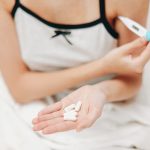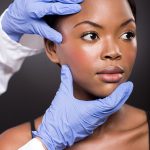1. Understanding PRP Therapy for Hair Loss
Platelet-Rich Plasma (PRP) therapy has gained popularity as a potential treatment for hair loss. This procedure utilizes the patient’s own blood to stimulate hair growth naturally. But how does it work, and why is it considered an option for those experiencing hair thinning or baldness? Let’s take a closer look.
What Is PRP Therapy?
PRP therapy involves drawing a small amount of the patient’s blood, processing it to concentrate the platelets, and then injecting this platelet-rich plasma into the scalp. Platelets contain growth factors that help stimulate hair follicles, promoting regeneration and hair growth.
How Does PRP Work for Hair Loss?
The process of PRP therapy follows these key steps:
| Step | Description |
|---|---|
| Blood Draw | A small sample of blood is taken from the patient, usually from the arm. |
| Centrifugation | The blood sample is placed in a centrifuge, which spins at high speed to separate plasma from red blood cells. |
| PRP Extraction | The concentrated platelet-rich plasma is extracted from the separated blood components. |
| Injection into Scalp | The PRP is carefully injected into areas of the scalp where hair thinning or loss is occurring. |
Why Is PRP Used for Hair Loss?
The primary reason PRP therapy is used for hair loss is its ability to enhance cell regeneration and improve follicle function. Since platelets contain growth factors, they can potentially awaken dormant hair follicles and encourage new hair growth. Additionally, because PRP uses the patient’s own blood, the risk of allergic reactions or adverse side effects is minimal.
Potential Benefits of PRP Therapy for Hair Loss
- Natural Treatment: Uses the body’s own healing properties to stimulate hair growth.
- Minimally Invasive: Involves only injections, avoiding surgical procedures.
- No Major Downtime: Patients can typically resume normal activities shortly after treatment.
- Suits Various Types of Hair Loss: Can be used for androgenetic alopecia and other forms of thinning hair.
Who Might Benefit from PRP Therapy?
This treatment may be suitable for individuals with early-stage hair thinning or mild to moderate hair loss. It is often recommended for those who are not ready for surgical options like hair transplants but want to explore non-invasive alternatives.
2. The Science Behind PRP and Hair Regrowth
Platelet-rich plasma (PRP) therapy has gained attention as a promising treatment for hair loss, but how exactly does it work? Understanding the biological mechanisms behind PRP can help explain why it may be effective for some individuals while yielding different results for others.
How PRP Stimulates Hair Follicles
PRP is derived from a patient’s own blood and contains a high concentration of platelets, which are packed with growth factors. These growth factors play a crucial role in tissue repair and regeneration. When injected into the scalp, PRP is believed to:
- Stimulate dormant hair follicles: Growth factors activate weak or inactive follicles, encouraging them to enter the active growth phase.
- Increase blood supply to the scalp: Improved circulation delivers more oxygen and nutrients to hair follicles, promoting healthier hair growth.
- Reduce inflammation: Inflammation can contribute to hair loss conditions like androgenetic alopecia. PRP’s anti-inflammatory properties may help create a healthier scalp environment.
- Boost collagen production: Collagen strengthens the hair structure and supports follicle health.
Key Growth Factors in PRP
The effectiveness of PRP largely depends on its growth factor content. Some of the most important growth factors in PRP include:
| Growth Factor | Main Function |
|---|---|
| Platelet-Derived Growth Factor (PDGF) | Stimulates cell growth and new blood vessel formation. |
| Epidermal Growth Factor (EGF) | Aids in cell proliferation and healing. |
| Vascular Endothelial Growth Factor (VEGF) | Promotes increased blood flow to hair follicles. |
| Transforming Growth Factor-Beta (TGF-β) | Aids in tissue regeneration and reduces inflammation. |
| Insulin-Like Growth Factor-1 (IGF-1) | Pivotal for cell survival and follicle development. |
Factors That May Affect PRP Effectiveness
The success of PRP therapy can vary from person to person based on several factors, including:
- The severity of hair loss: PRP tends to work best for individuals with early-stage hair thinning rather than complete baldness.
- The quality of the PRP preparation: Higher platelet concentrations and proper activation techniques may enhance results.
- Lifestyle factors: Diet, stress levels, smoking, and overall health can influence how well the body responds to PRP treatment.
- The frequency of treatments: Most studies suggest multiple sessions over several months yield better outcomes than a single injection.
- The underlying cause of hair loss: PRP is most commonly used for androgenetic alopecia but may not be as effective for other types of hair loss, such as scarring alopecia.
A better understanding of these biological processes helps set realistic expectations for individuals considering PRP therapy. While research continues to explore its full potential, many patients report noticeable improvements in hair thickness and density with consistent treatment.
![]()
3. What Research Says About PRP for Hair Loss
Platelet-rich plasma (PRP) therapy has gained popularity as a promising treatment for hair loss, but what does the research actually say about its effectiveness? Several clinical studies have examined how well PRP works for different types of hair loss, including androgenetic alopecia (male and female pattern baldness) and other conditions that cause thinning hair.
Clinical Studies on PRP for Hair Loss
Over the years, multiple studies have been conducted to assess the impact of PRP injections on hair growth. Most research suggests that PRP can stimulate hair follicles, improve hair density, and reduce hair shedding. However, results vary based on factors like treatment protocols, the patient’s condition, and the number of sessions required.
| Study | Participants | Treatment Duration | Results |
|---|---|---|---|
| A 2019 Study in Dermatologic Surgery | 40 patients with androgenetic alopecia | 3 months (3 sessions) | Significant increase in hair density and thickness |
| A 2020 Systematic Review | Various studies reviewed | N/A | Most studies showed positive results in hair regrowth |
| A 2021 Study in Aesthetic Surgery Journal | 50 patients with hair thinning | 6 months (4 sessions) | Improved hair growth and reduced shedding |
Success Rates of PRP Therapy
The success rate of PRP therapy varies from person to person. While many patients experience noticeable improvement, some may see only minimal changes. Factors such as age, genetics, severity of hair loss, and overall health play a role in determining how effective PRP will be.
Key Factors Affecting PRP Success:
- The Severity of Hair Loss: PRP tends to work best for early-stage hair thinning rather than complete baldness.
- The Frequency of Treatments: Most experts recommend multiple sessions over several months for optimal results.
- The Patient’s Overall Health: Individuals with good circulation and healthy platelet levels respond better to PRP therapy.
- The Technique Used: The way PRP is prepared and injected can influence its effectiveness.
Expert Opinions on PRP for Hair Growth
A growing number of dermatologists and hair restoration specialists consider PRP an effective option for certain types of hair loss. Many experts suggest combining PRP with other treatments like minoxidil or low-level laser therapy to enhance results. However, they also emphasize that not everyone will achieve the same level of success.
Main Takeaways from Experts:
- Efficacy Varies: While many patients see improvement, results are not guaranteed.
- No One-Size-Fits-All Solution: PRP works best when tailored to individual needs.
- A Commitment Is Required: Regular maintenance treatments may be needed to sustain results.
- A Combination Approach May Work Best: Pairing PRP with other treatments can yield better outcomes.
The existing research on PRP therapy for hair loss is promising but still evolving. While many studies support its effectiveness, more large-scale trials are needed to determine long-term benefits and standardize treatment protocols.
4. Who is an Ideal Candidate for PRP Therapy?
PRP therapy has gained popularity as a treatment for hair loss, but it may not be suitable for everyone. Several factors determine whether someone is an ideal candidate, including age, the stage of hair loss, and underlying health conditions.
Age Considerations
PRP therapy tends to work best for individuals in the early to middle stages of hair loss. Younger patients, typically between their late 20s and early 50s, tend to respond better because they still have active hair follicles that can be stimulated by PRP.
Stage of Hair Loss
The effectiveness of PRP depends largely on how advanced the hair loss is. It is most beneficial for those experiencing thinning hair rather than complete baldness. Below is a breakdown of how PRP works at different stages:
| Stage of Hair Loss | Effectiveness of PRP |
|---|---|
| Early Thinning | Highly effective; can slow down hair loss and promote regrowth. |
| Moderate Hair Loss | Moderately effective; helps improve hair density and thickness. |
| Advanced Balding | Less effective; may not work if follicles are completely inactive. |
Underlying Health Conditions
Certain medical conditions can impact the success of PRP therapy. Individuals with autoimmune disorders, chronic illnesses, or blood-related conditions may not see optimal results. Additionally, smokers or those with poor overall health may experience reduced effectiveness due to impaired healing and circulation.
Who Should Avoid PRP Therapy?
- Individuals with advanced baldness: If the hair follicles are completely inactive, PRP is unlikely to restore significant growth.
- Patients with certain medical conditions: Those with blood disorders, autoimmune diseases, or chronic illnesses should consult their doctor before considering PRP.
- Lifestyle factors: Smoking, excessive alcohol consumption, and poor nutrition can negatively impact results.
The Bottom Line on Ideal Candidates
The best candidates for PRP therapy are individuals experiencing early to moderate hair loss who maintain good overall health. Consulting a specialist can help determine whether this treatment is right for your specific condition.
5. Risks, Costs, and Considerations
Before starting PRP therapy for hair loss, its essential to understand the potential risks, financial investment, and treatment expectations. Below, we break down these key factors to help you make an informed decision.
Possible Side Effects
PRP therapy is generally considered safe since it uses your own blood, reducing the risk of allergic reactions. However, some side effects can still occur:
- Pain or discomfort: Mild pain or tenderness at the injection site.
- Swelling and redness: Temporary inflammation is common after treatment.
- Bruising: Some patients experience minor bruising at the injection areas.
- Infection: Though rare, improper sterilization could lead to infection.
- Dizziness or nausea: Some individuals may feel lightheaded after blood is drawn.
Treatment Costs
The cost of PRP therapy varies depending on location, clinic reputation, and provider expertise. Most insurance plans do not cover PRP for hair loss as it is considered a cosmetic procedure.
| Treatment Factor | Estimated Cost |
|---|---|
| Single PRP Session | $500 – $2,500 |
| Total Cost for Full Treatment (3-6 sessions) | $1,500 – $10,000+ |
| Maintenance Sessions (Annually) | $500 – $1,500 per session |
Treatment Frequency and Duration
A full PRP therapy plan typically includes multiple sessions over several months. The general recommendation is:
- Initial Phase: 3 to 6 treatments spaced about 4 to 6 weeks apart.
- Maintenance Phase: Follow-up treatments every 4 to 6 months for best results.
Factors to Consider Before Starting PRP Therapy
If youre thinking about PRP for hair restoration, consider these important factors:
- Your Hair Loss Stage: PRP works best in early stages of hair thinning rather than advanced baldness.
- Your Overall Health: Conditions like blood disorders or active infections may affect eligibility.
- Lifestyle Factors: Smoking and poor nutrition can impact treatment effectiveness.
- Your Budget: Since multiple sessions are needed, be sure youre financially prepared.
- Your Expectations: Results vary; some people experience significant regrowth while others see only minimal improvement.
If youre unsure whether PRP therapy is right for you, consult with a medical professional to discuss your specific situation and potential outcomes.

